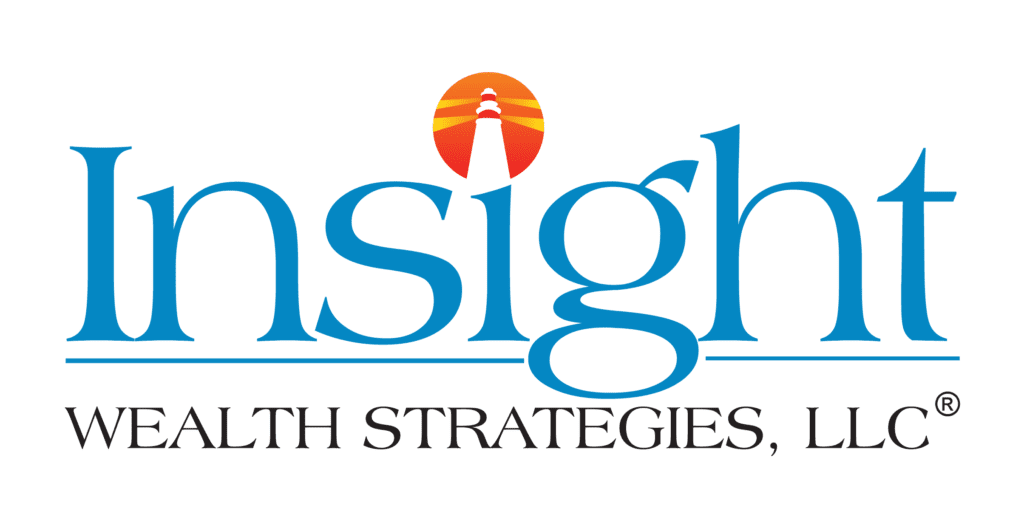What is a Qualified Retirement Plan?
A qualified retirement plan is a type of employer-sponsored retirement savings plan that is designed to provide tax benefits and retirement income to employees. These plans not only help individuals save for their future but also offer opportunities to enjoy a fulfilling retirement with various things to do during retirement. The purpose of these plans is to encourage employees to save for retirement and provide them with a secure financial future, ensuring they have the means to pursue their passions, explore new hobbies, travel, and engage in other enjoyable activities during their retirement years.
Types of Qualified Retirement Plans
Defined Benefit Plan
A defined benefit retirement plan is a type of retirement plan in which an employer guarantees a specified retirement benefit to its employees. This benefit is usually based on a formula that takes into account an employee’s years of service and average salary. The employer is responsible for funding the plan, and the retirement benefits are typically paid out in the form of a monthly annuity. With a defined benefit plan, the risk and responsibility of investing the assets and ensuring there is enough money to pay the promised benefits rests solely on the employer. This type of retirement plan is becoming less common in the private sector but is still prevalent in some public sector jobs, such as government workers and teachers.
Defined Contribution
A defined contribution retirement plan is a type of retirement plan in which both the employer and employee contribute to an individual retirement account (IRA) or a 401(k) plan. The contributions are usually invested in stocks, bonds, and other assets with the goal of generating investment returns over time. The amount of money an employee accumulates in their account depends on how much they contribute and the performance of their investments. In a defined contribution plan, the employee bears the investment risk, and the employer is not responsible for guaranteeing a specific retirement benefit. At retirement, the employee can withdraw the money accumulated in their account, typically in the form of a lump sum or a series of payments. This type of retirement plan has become increasingly popular in the private sector as it provides more flexibility and control over retirement savings for employees.
Hybrid
There are several hybrid retirement plan options that combine features of both defined benefit and defined contribution plans. One example is the cash balance plan, which is a defined benefit plan that looks and operates like a defined contribution plan. In a cash balance plan, the employer sets up an account for each employee and credits it with a percentage of their salary each year, typically around 5%. The employee’s account grows over time with interest credits, which are guaranteed by the employer, and is then converted into a lump sum or annuity at retirement. Another hybrid plan is the target benefit plan, which is a defined contribution plan that is designed to deliver a specified retirement benefit. The employer sets a target benefit level and then contributes enough to each employee’s account to achieve that benefit based on a set formula. These hybrid plans offer employers more flexibility in designing retirement benefits that meet their needs while providing employees with some degree of guaranteed retirement income.
Qualified Retirement Plan Requirements
A qualified retirement plan is a type of retirement plan that meets specific requirements set by the Internal Revenue Service (IRS) to receive tax-favored treatment. These requirements include participation, vesting, and funding standards, as well as rules related to the amount of benefits that can be provided to highly compensated employees. To be considered qualified, a plan must also satisfy certain nondiscrimination tests, which ensure that the plan does not unfairly benefit highly compensated employees at the expense of lower-paid employees. Qualified plans include 401(k) plans, profit-sharing plans, defined benefit plans, and cash balance plans. By meeting the requirements of a qualified plan, both employers and employees can benefit from tax advantages, such as tax-deferred contributions, tax-free investment growth, and potentially lower tax rates in retirement.
Qualified Retirement Plan Tax Benefits
Employer Benefits
Employers who offer a qualified retirement plan can benefit from several tax advantages. First, contributions made to the plan are tax-deductible for the employer, meaning they can reduce the amount of taxable income reported on their business tax return. Second, any investment earnings generated by the plan assets are tax-free as long as they remain in the plan. Third, employers may be eligible for tax credits for startup costs associated with establishing a qualified plan. Finally, offering a retirement plan can be an effective way for employers to attract and retain employees, which can lead to increased productivity and profitability. In summary, offering a qualified retirement plan can provide tax benefits for employers, while also helping employees save for their future retirement needs.
Employee Benefits
Employees who participate in a qualified retirement plan can also benefit from several tax advantages. First, contributions made to the plan, such as 401(k) contributions or contributions to a traditional IRA, are made on a pre-tax basis, which reduces the amount of taxable income reported on their tax return. This can result in a lower tax bill in the year contributions are made. Second, any investment earnings generated by the plan assets are tax-deferred, meaning they are not taxed until the employee withdraws them from the plan, typically in retirement when they may be in a lower tax bracket. Third, employees who contribute to a Roth IRA or Roth 401(k) can enjoy tax-free investment growth, as well as tax-free withdrawals in retirement. Finally, some employees may be eligible for the Saver’s Credit, which provides a tax credit for eligible individuals who contribute to a qualified retirement plan. In summary, using a qualified retirement plan can provide tax benefits for employees, while also helping them save for their future retirement needs.
Qualified Retirement Plans vs. Nonqualified Retirement Plans
A non-qualified retirement plan is a type of retirement plan that does not meet the requirements set by the Internal Revenue Service (IRS) for a qualified retirement plan. Unlike qualified plans, which receive tax-favored treatment, non-qualified plans are funded with after-tax dollars, meaning that contributions are not tax-deductible for the employer. Non-qualified plans are often used by employers to provide additional retirement benefits to highly compensated employees or to offer benefits that are not available through a qualified plan. Because they are not subject to the same rules and regulations as qualified plans, non-qualified plans offer more flexibility in terms of plan design and benefit structure. For example, non-qualified plans can provide benefits to select groups of employees, such as executives or top performers, without having to meet nondiscrimination testing requirements. However, because non-qualified plans do not receive tax-favored treatment, employees who participate in these plans may have to pay taxes on their benefits when they are received. In summary, non-qualified retirement plans offer employers more flexibility in designing retirement benefits, but they do not provide the same tax benefits for employers and employees as qualified plans.
Where to Start Planning
Insight Wealth Strategies is an excellent place to turn to for assistance with retirement planning, regardless of your age or stage in life. Recognizing the advantage of investing early for retirement, our team of fiduciaries and fee-only financial advisors is dedicated to acting in your best interests and providing unbiased advice. We work closely with our clients to understand their financial goals and objectives and develop a customized retirement plan that meets their needs. Whether you are just starting out in your career, preparing for retirement, or already retired, our team has the expertise to help you navigate the complexities of retirement planning. We can help you create a retirement income strategy, maximize your Social Security benefits, and manage your investments to help ensure that you have enough money to live comfortably throughout your retirement years. Whether you’re looking for Houston retirement strategies or a San Ramon retirement planner, our team is committed to providing the highest level of service and support, and we take pride in helping our clients achieve their financial goals. Request a consultation today to learn more about how we can help you plan for a secure and fulfilling retirement.
Benefits of Working with an Advisor
|
Benefit |
Description |
|
Personalized retirement plan |
A financial advisor can help you create a personalized retirement plan that takes into account your unique financial situation, goals, and needs. |
|
Investment management |
A financial advisor can help you manage your investments to help ensure that your portfolio is diversified and aligned with your risk tolerance and retirement goals. |
|
Tax planning |
A financial advisor can help you minimize your tax liability in retirement by identifying tax-efficient strategies and retirement accounts. |
|
Social Security optimization |
A financial advisor can help you maximize your Social Security benefits by creating a claiming strategy that aligns with your retirement goals. |
|
Estate planning |
A financial advisor can help you create an estate plan that ensures your assets are distributed according to your wishes and can help minimize estate taxes. |
|
Behavioral coaching |
A financial advisor can help you stay disciplined and focused on your retirement goals, even during market volatility or other financial challenges. |
|
Ongoing support |
A financial advisor can provide ongoing support and guidance throughout your retirement journey, helping you adjust your plan as needed to help ensure that you stay on track. |
Request your complimentary consultation today!
Reviewed by,

Brian Stormont, CFP®
Brian Stormont is a comprehensive, fee-only financial advisor with Insight Wealth Strategies who began his career in the financial industry in 2000. His expertise encompasses retirement planning, investment planning, estate planning, and high-level strategies to help business owners and individuals minimize their income taxes.
Insight Wealth Strategies, LLC is a Registered Investment Adviser. Advisory services are only offered to clients or prospective clients where Insight Wealth Strategies, LLC and its representatives are properly licensed or exempt from licensure. Past performance is no guarantee of future returns. Investing involves risk and possible loss of principal capital. No advice may be rendered by Insight Wealth Strategies, LLC unless a client service agreement is in place.
Insight Wealth Strategies, LLC (IWS) and its affiliates do not provide tax, legal or accounting advice. This material has been prepared for informational purposes only, and is not intended to provide, and should not be relied on for, tax, legal or accounting advice. You should consult your own tax, legal and accounting advisors before engaging in any transaction.

